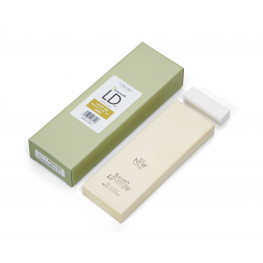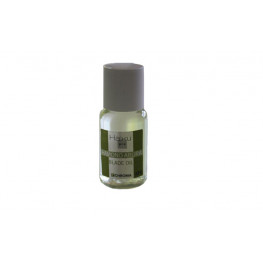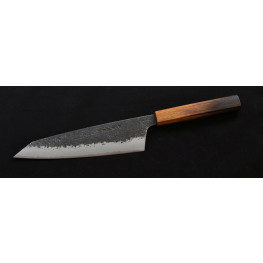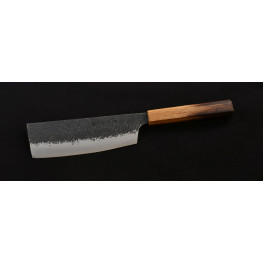Product detail
As you may have read in other places of our store, Sakai Takayuki is one of the top manufacturers of kitchen knives. It has gained this status thanks to great craftsmen who represent the absolute top not only in the Sakai area, but throughout Japan. Of course, the first violin in this orchestra is played by the blacksmith, followed in close succession by the grinder. These are absolutely key posts that decide success or disappointment. Sakai Takayuki has absolute virtuosos in both positions. But judge for yourself.
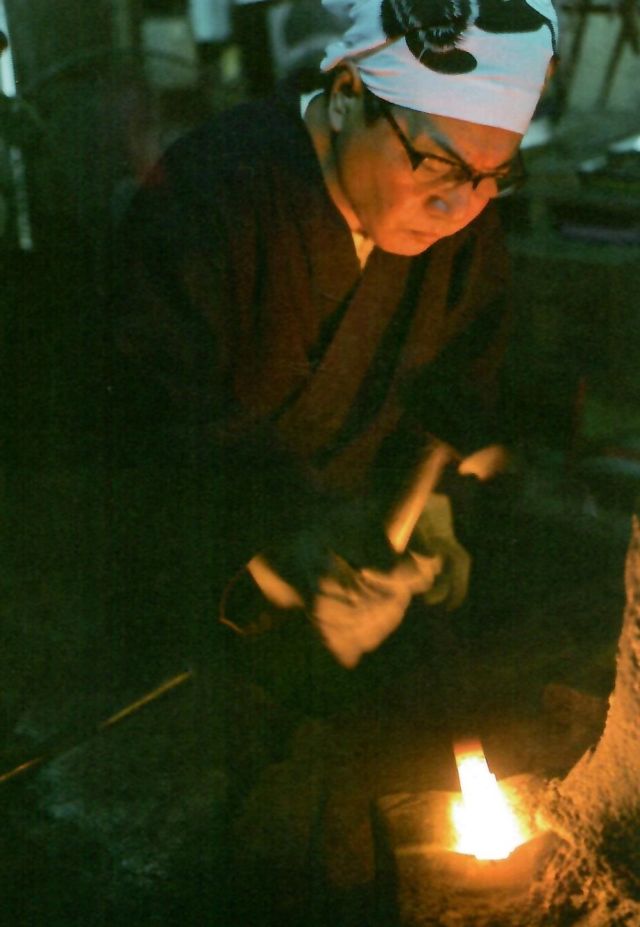
Itsuo Doi is the third generation of the blacksmith clan. He continues the work of his grandfather Kazuo and his father Keijiro. His favorite material is Hitachi Metals' "blue" Aogami steel. Seeing this master transform a small piece of profiled steel into a blade is a real experience. In his workshop, you will also find a young blacksmith, who initially performs less demanding tasks, but Doi-san gradually draws him into the plot and thus prepares his follower.

A properly forged blade is an absolute foundation. But it lacks functionality. This is delivered by Mitsuo Yamatsuka. Everyone wants a blade from him. And that is a serious problem. This operation is more complicated than it seems at first glance. This is where the most significant time "funnel" arises in the entire production process. Delivery times exceeding one year are therefore understandable. Yamatsuka-san is aware of this and that is why his two sons and a daughter work in his workshop. After all, who is better to rely on than one's own blood?
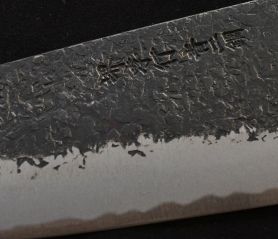
The Homura series is reserved for traditionally hand-forged blades with a symmetrical, double-sided profiled blade. Authored exclusively by Doi-san and Yamatsuka-san, this is the best of the segment. The San-Mai blade is really massive and will get you with its texture. It is not the classic Tsuchime we are used to, nor the delicate Nishiji. It's a rather complicated texture at first glance reminiscent of kanji characters lying around. The depth of this "pattern" gradually decreases towards the edge. It is the work of the master hammer who left it in Kurouchi modification. Its black passes through the dull gray shinogi into the polished hamon. The core is forged from Aogami 2. The master does not waste time by forging the mark. It's his assistant's job. On the left side, he hand stamped the name of the company and the material (Sakai Takayuki, Blue 2), on the right the blacksmith's personal emblem and Homura's name, of course all in kanji characters. Yamatsuka-san conjured a masterful Hamaguri with an almost invisible facet. Despite the robustness of the blade, its sharpness is exemplary.
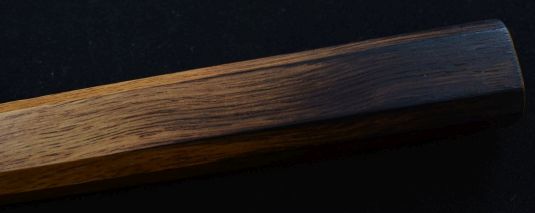
This Homura series was given the nickname Guren. It is a term for naming a red water lotos. Apparently due to the color similarity with the oak handles. They have the shape of an octagon and a tanned lower part. This increased not only the aesthetic value, but also the resistance to moisture. The absence of a ferrule is more than welcome in this case. The packaging corresponds to the overall concept. In addition to various tastefully presented information, you can also find small origami here. Carefully unfold it and you will find a nice gift inside. Which one, we'll keep that to ourselves.
In conclusion, just a statement: take the finest traditional materials, call the biggest names in the field and let them handcraft a kitchen knife = Homura Guren.
©2023 Copyright Roman Ulík, Nippon Knives, www.japonskenoze.sk all rights reserved.
Photos and texts are protected by copyright law and their use without the author's consent is not possible.


 Sign in
Sign in Registration
Registration











